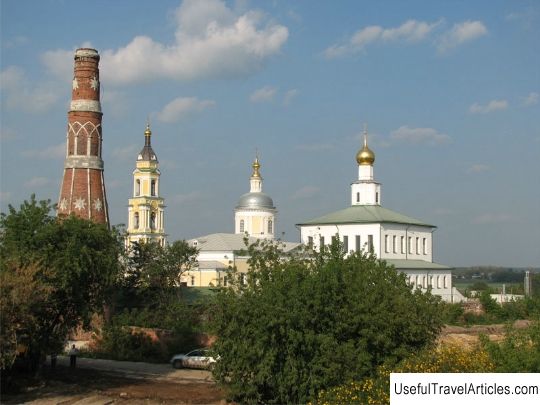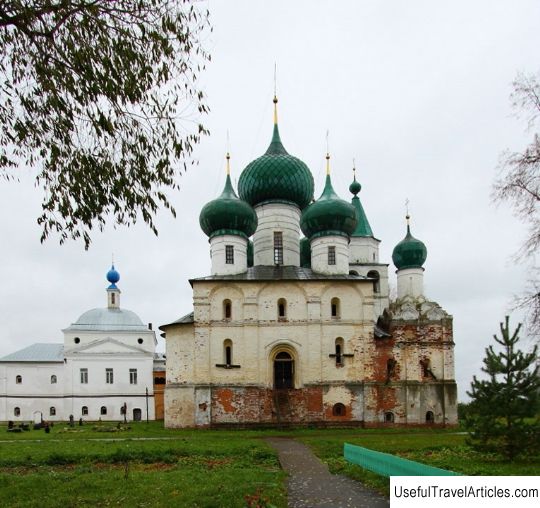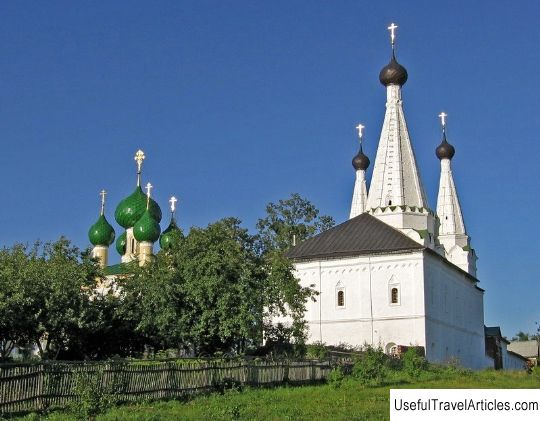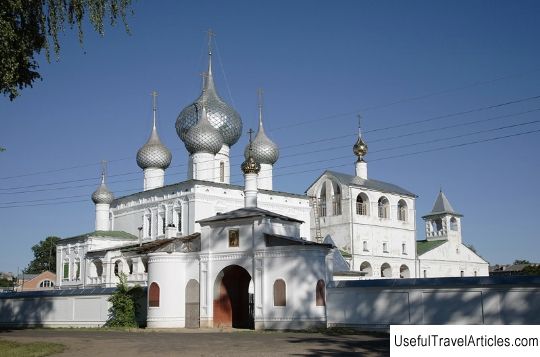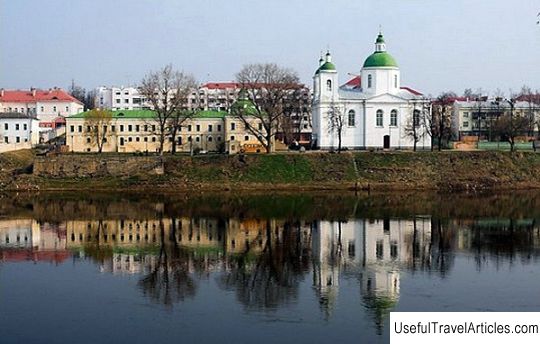Epiphany monastery description and photos - Russia - Golden Ring: Uglich
Rating: 7,5/10 (100 votes) 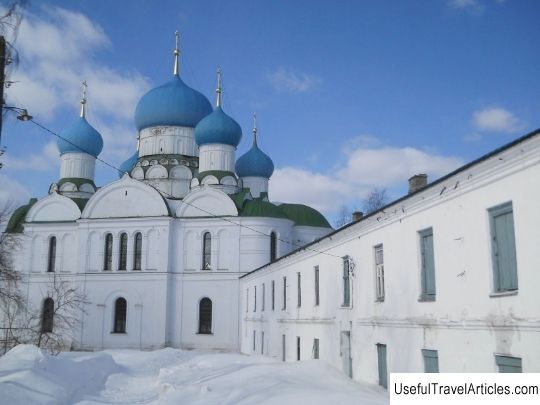
Epiphany Monastery description and photos - Russia - Golden Ring: Uglich. Detailed information about the attraction. Description, photos and a map showing the nearest significant objects. Photo and descriptionIn the central part of the city of Uglich, you can see amazingly beautiful blue domes - this is the famous cathedral at the female Epiphany monastery, which for a long time was the largest in the entire city. The monastery actually occupied an entire quarter, which was located on four streets, including the huge Rostov street. The monastery was founded in the second half of the 14th century with the support of Princess Evdokia, the wife of Dmitry Donskoy. At one time she was forcibly tonsured into a nun by Dmitry's mother when her son died. During the Polish invasion, the monastery completely burned down, and its restoration was carried out only in the 1620s. The monastery was moved to Rostovskaya Street a little later - in 1664 - due to the fact that it could no longer fit in the Kremlin, after all, he began to grow tirelessly. The very first stone church at the Epiphany Monastery was the Smolensk Church, originally consecrated as the Epiphany. Its construction began in 1689 and finished 11 years later. The building is represented by a tall one, standing on a basement and equipped with a five-domed, extended refectory room and only one aisle. In keeping with most 17th century churches, Smolensk is also vertically oriented, which gives it a more solemn appearance. From the west, a bell tower was added to the temple, very similar to the bell tower of the Temple of Demetrius, located on the territory of the Uglich Kremlin. The bell tower has not survived to this day. The second temple of the Epiphany Monastery is called Fedorovsky, and it was built in 1818. It is characterized by a rather unconventional appearance - it was built in the style of classicism, which is especially rare for Uglich. The temple is cruciform in plan, which resembles the capital's cathedrals built in the 18-19 centuries. The interior decoration contains frescoes dating from 1822 and 1824 and executed by a talented master named Medvedev; the murals are very similar to the murals in the Transfiguration Cathedral at the Uglich Kremlin. In the 19th century, the monastery had a rather vast territory, which was built up with premises intended for abbots, as well as cells, wooden services. Another temple at the monastery was the Epiphany Cathedral, built according to the project of the talented architect K.A. Tona - the author of the Moscow Cathedral of Christ the Savior. It is believed that he stands in the place where in the past there was an orchard that belonged to the Butorin family. The construction of the cathedral on this site was not accidental, because, as the hostess of the house claimed, for several years three white swans flew here, which became a symbolic sign. This cathedral is distinguished by its impressive size; it is the largest in all of Uglich. The cathedral has a laconic and austere outlines, but still it is solemnly majestic. Its main decoration is large chapters, today covered with golden stars, as well as large semicircles of zakomars, and in them were mounted sheets made of metal, on which there is painting. The Epiphany Monastery once housed two icons: the miraculous icon of the Mother of God "The Waking Eye" and the icon of the Fyodorov Mother of God, which were especially revered by the locals. The first icon was donated to the monastery by one city woman named Lebedev, who confirmed the fact that the icon belongs to ancient times. During the reign of the Soviet regime, the monastery was closed, and soon destroyed; cells and temples were converted for household needs and housing. During the 1970s, restoration work was carried out exclusively on the external decoration. Since 2003, all the monastery churches have been transferred to believers, after which their gradual restoration began.           We also recommend reading Gallery of modern art (Moderna galerija) description and photos - Slovenia: Ljubljana Topic: Epiphany monastery description and photos - Russia - Golden Ring: Uglich. |
